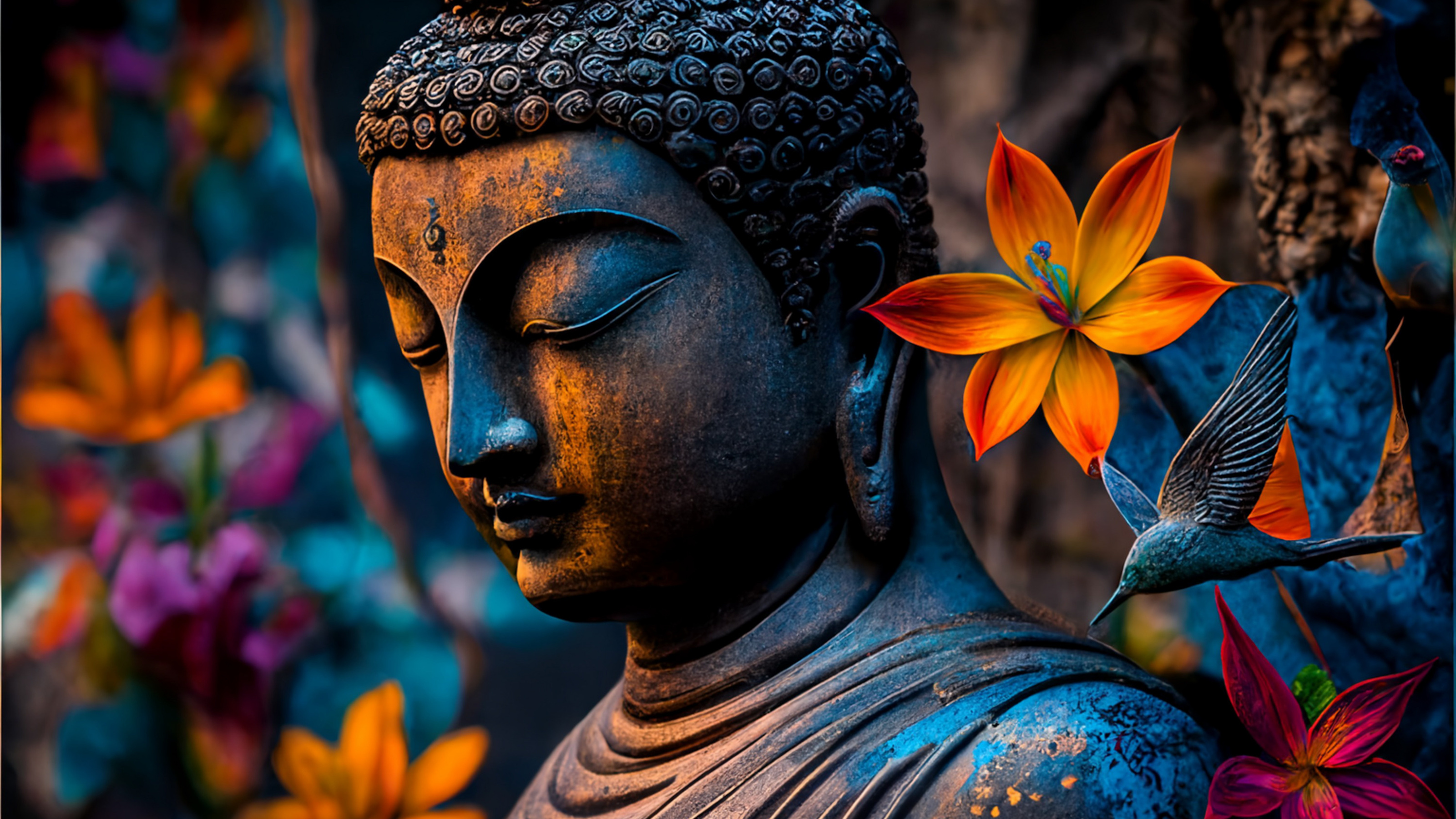Jainism and Buddhism, two of India’s most profound spiritual movements, emerged during a time of societal upheaval in ancient India. They challenged the rigid caste system, offered alternatives to Vedic rituals, and preached paths of self-realization. Though similar in origin, their philosophies, practices, and trajectories diverged significantly. This article takes you from beginner insights to advanced analysis, highlighting key principles, practices, and their relevance today.
Silence and self-restraint are the keys to liberation. When one masters the art of non-violence and detachment, they transcend the bounds of ignorance and achieve the highest truth.
Mahavira
Jainism and Buddhism were born in an era marked by intense social and religious transformation, responding to the rigid orthodoxy of Vedic traditions. These movements questioned the dominance of Brahminical rituals, sought to democratize spiritual practices, and emphasized ethical conduct over blind faith. Both religions aimed to liberate individuals from the cycle of birth and death (samsara) through self-discipline, compassion, and knowledge. By challenging the established norms, they not only redefined spirituality but also laid the groundwork for social equality and philosophical pluralism.
Jainism: The Path of Austerity
Foundations
Jainism predates Buddhism, with its roots linked to the 24 Tirthankaras, spiritual teachers who guide humanity. The most significant figure is Vardhamana Mahavira (539-467 BCE), the 24th Tirthankara, who formalized Jain doctrines. Born into a Kshatriya family, Mahavira renounced worldly life at 30, seeking enlightenment through intense asceticism. After 13 years, he attained Kevala Jnana (absolute knowledge), becoming a Jina (conqueror). His teachings formed the backbone of Jainism.

Core Principles
- Triratna (Three Jewels):
- Samyak Darshan: Right Faith
- Samyak Jnana: Right Knowledge
- Samyak Charitra: Right Conduct
- Panch Mahavartas (Five Vows):
- Ahimsa (Non-violence): The cornerstone of Jainism, influencing practices like vegetarianism.
- Satya (Truth): Speaking without deceit.
- Asteya (Non-stealing): Respecting others’ possessions.
- Aparigraha (Non-possessiveness): Minimalism to avoid material distractions.
- Brahmacharya (Celibacy): Practiced by monks and nuns.
Advanced Concepts
- Karma Theory: Unlike Hinduism, Jainism sees karma as a physical substance that attaches to the soul, impeding liberation.
- Anekantavada (Multiplicity of Views): Truth is multifaceted, promoting intellectual tolerance.
Sects in Jainism
- Digambara (Sky-clad): Extreme ascetic practices, including nudity, representing detachment.
- Svetambara (White-clad): More moderate, wearing simple white garments.
Influence and Modern Relevance
Jain principles resonate globally, especially in movements advocating environmentalism and animal rights. For instance, Gandhi’s philosophy of non-violence drew inspiration from Jainism.
Buddhism: The Middle Way
Foundations
Founded by Siddhartha Gautama (Gautam Buddha) (563–483 BCE), Buddhism emerged as a response to societal suffering and Vedic orthodoxy. Siddhartha, a prince of Kapilavastu, renounced his privileged life at 29, seeking the cessation of suffering. His enlightenment at Bodh Gaya under the Bodhi Tree marked the birth of Buddhism.

Core Teachings
- Four Noble Truths:
- Life is suffering (Dukkha).
- Desire is the cause of suffering.
- Eliminating desire ends suffering.
- Follow the Eightfold Path to achieve this.
- Eightfold Path (Ashtanga Marga):
- Right Understanding, Thought, Speech, Action, Livelihood, Effort, Mindfulness, and Concentration.
- Triratna (Three Jewels):
- Buddha: The enlightened one.
- Dharma: His teachings.
- Sangha: The monastic community.
Advanced Practices
Buddhism diverged into three main schools:
- Theravāda (Hinayana): Conservative, emphasizing personal enlightenment.
- Mahayana: Advocates universal salvation, introducing Bodhisattvas.
- Vajrayana: Esoteric practices for quick enlightenment, dominant in Tibet.
Philosophical Depth
- Sunyata (Emptiness): Central to Mahayana, emphasizing the interdependence of all phenomena.
- Meditation Practices: Mindfulness (Vipassana) and concentration (Samatha) form the crux of Buddhist spirituality.
Buddhism’s Global Impact
Buddhism spread across Asia, adapting to local cultures. Modern mindfulness practices and secular ethics often draw heavily from Buddhist teachings.
Similarities and Differences
Philosophical Overlaps
- Karma and Rebirth: Both reject the idea of a creator god, emphasizing self-effort for liberation.
- Ahimsa: Non-violence is integral to both.
Key Divergences
| Aspect | Jainism | Buddhism |
|---|---|---|
| Ultimate Goal | Moksha (liberation of the soul) | Nirvana (cessation of suffering) |
| Approach | Severe asceticism | The Middle Path |
| Belief in Soul | Eternal soul (jiva) exists | No permanent self (anatta) |
| Scriptures | Agamas in Prakrit | Tripitaka in Pali |
Engaging Anecdotes
- Mahavira and the Snake: Legend states Mahavira once meditated so deeply that a snake coiled around him, yet he remained unshaken, embodying perfect non-violence.
- Buddha and Angulimala: Buddha transformed a murderer, Angulimala, into a monk, showcasing compassion’s power.
Relevance in Modern Times
Personal Growth
Both philosophies provide frameworks for ethical living and self-discipline. For example, mindfulness meditation from Buddhism is a global phenomenon aiding mental health.
Peace comes from within. Do not seek it without.
Gautam Buddha
Environmental Ethics
Jainism’s emphasis on non-possessiveness aligns with sustainable living. Similarly, Buddhism advocates for mindful consumption, inspiring eco-consciousness.
Social Impact
- Jain and Buddhist charities play roles in education and healthcare.
- Their messages of equality resonate in today’s efforts to combat social hierarchies.
How to Start Your Journey

- Read Foundational Texts: Jain Kalpasutra or Buddhist Dhammapada.
- Practice Mindfulness: Start with 5 minutes of meditation daily.
- Explore Philosophy: Debate concepts like Anekantavada or Sunyata to deepen understanding.
- Visit Pilgrimage Sites: Experience Jain temples in Palitana or the Mahabodhi Temple at Bodh Gaya.
Breaking Down the Barrier
Jainism and Buddhism, though ancient, offer timeless wisdom that continues to resonate in the modern world. Their teachings go beyond spirituality, acting as blueprints for ethical living, mental well-being, and sustainable practices. Both philosophies encourage introspection and self-mastery, empowering individuals to rise above worldly distractions and find inner peace. They challenge us to embrace non-violence, compassion, and simplicity in our daily lives. Whether you’re seeking personal growth, exploring profound metaphysical truths, or aiming to create a harmonious society, Jainism and Buddhism provide transformative insights and practices that remain relevant across cultures and generations.
Must Read : The Vedic Age












